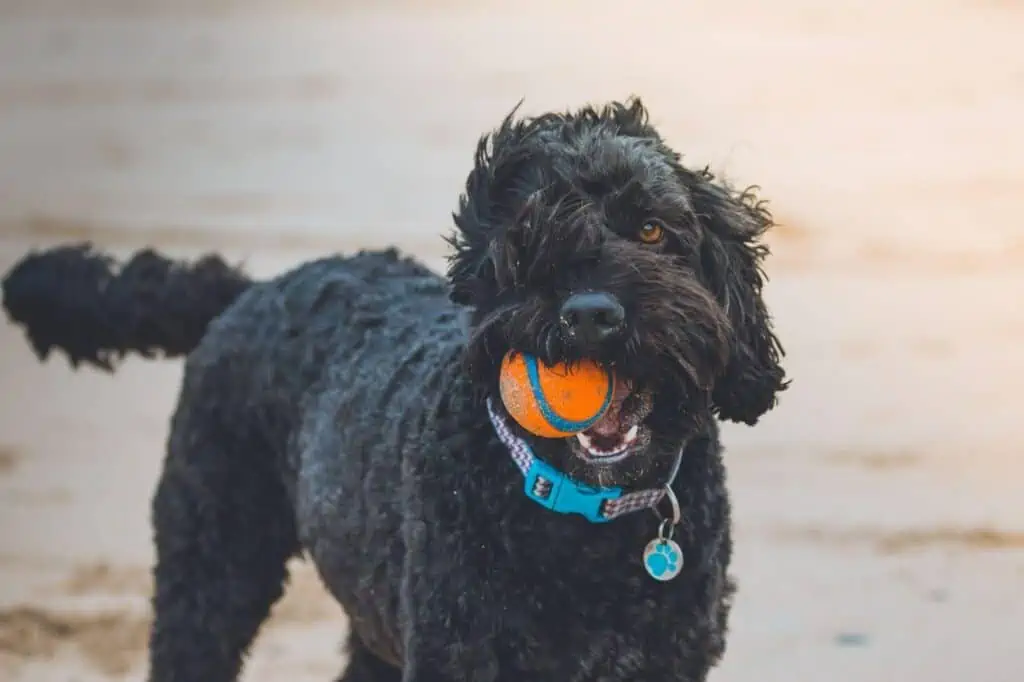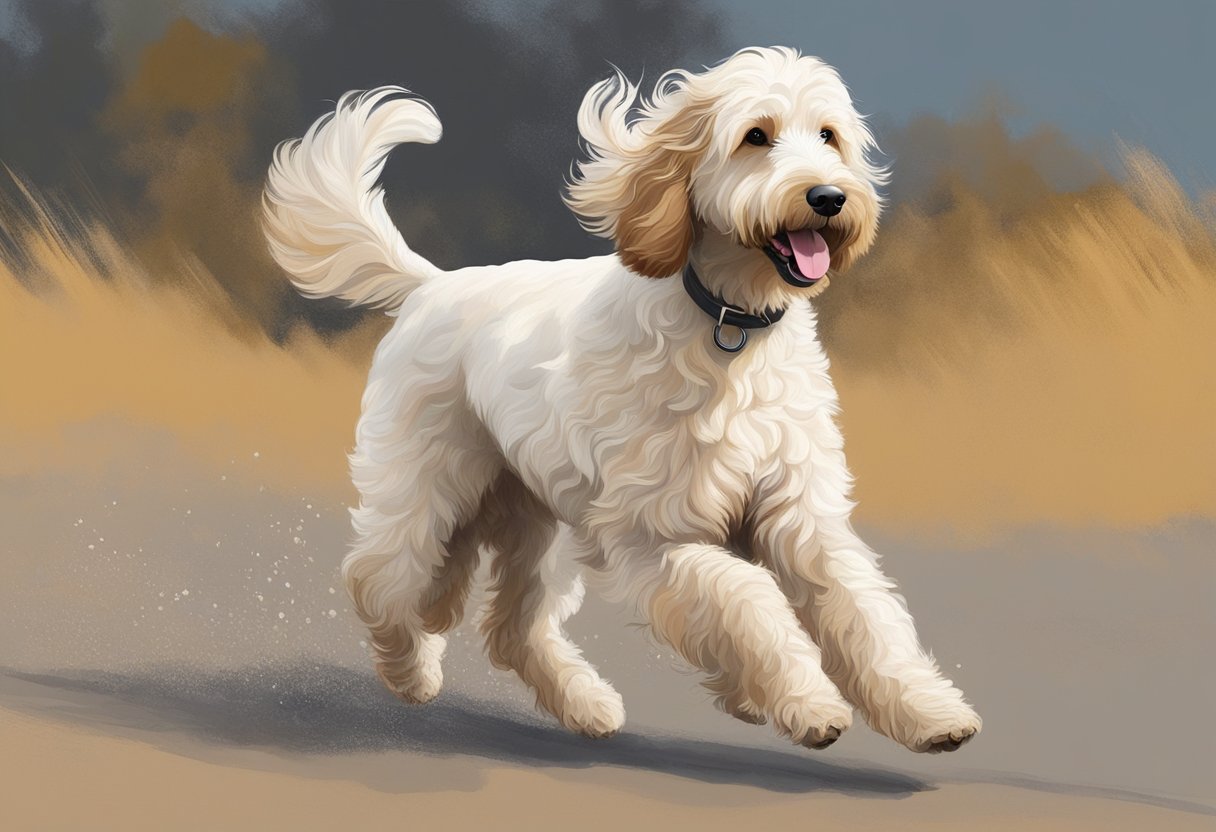How to Tell if Your Labradoodle Likes You? [6 Key Signs]
As a Labradoodle owner, it’s natural to wonder if your furry friend likes you. These intelligent, friendly dogs often enjoy spending time with their families, but it can sometimes be difficult to read their behavior and emotions. In this article, we’ll explore some of the indicators that your Labradoodle values your companionship and is happy to have you as their owner.
There are different ways to tell if your Labradoodle likes you, from observing their physical needs and preferences to understanding the unique developmental stages and characteristics of the breed. Recognizing your Labradoodle’s emotional signals and interpreting their behavior during interactions can help you strengthen your bond and ensure a happy, healthy relationship.

Key Takeaways
- Pay attention to your Labradoodle’s emotional signals and interactions to gauge their feelings towards you.
- Consider your dog’s physical needs and preferences to better understand their contentment.
- Familiarize yourself with the development and characteristics of Labradoodles to foster a strong bond.
Spotting the Labradoodle’s Emotional Signals

Face and Eye Contact Emotions
Your Labradoodle’s facial expressions can reveal a lot about how they feel. Pay attention to their eye contact, as loving dogs will often maintain a gentle gaze with their owners. If your Labradoodle is making prolonged eye contact with you, it’s likely they trust and adore you.
On the other hand, a scared or anxious dog will avoid eye contact, often averting their eyes and tucking their ears back. Notice these signs to understand if your Labradoodle feels uncomfortable.
Ears: When your Labradoodle is happy and content, their ears will generally be relaxed. If they’re alert and excited, their ears may stand upright. Flat ears may signal that your furry friend is scared or uneasy.
Mouth: A happy dog will often have a relaxed, slightly open mouth, and may even give you a “smile.” On the contrary, a tight, closed mouth could indicate tension or stress.
Physical Movements and Postures
Your Labradoodle’s body language is another crucial aspect in determining their feelings toward you. Observe how they act around you in different situations.
Tail: A wagging tail is the most common sign of happiness in a dog. If your Labradoodle’s tail is wagging gently, it means they’re happy and enjoying your company. On the other hand, a stiff tail tucked between their legs indicates fear or anxiety.
Licking: When your Labradoodle licks your face or hands, it’s their way of showing affection and strengthening the bond between you both. A gentle lick is a clear indication of love and trust.
Paws: If your Labradoodle places their paw on you, it’s generally a sign of affection and protection, signaling their attachment to you.
By observing these facial expressions and body language cues, you’ll be able to determine whether your Labradoodle likes you. Always take note of these signals and respond with the appropriate care and attention, ensuring a healthy, happy relationship with your furry friend.
Reading Your Labradoodle’s Behavior and Interaction
Labradoodles are known for their intelligent and playful nature, which can make them excellent family pets. To determine if your Labradoodle likes you, pay close attention to their behavior and interaction with you and your family.

Understanding Their Playful Nature
Labradoodles are energetic and love to engage in playtime. If your Labradoodle frequently initiates play with you or responds positively when you initiate, this is a strong indication that they enjoy your companionship. Common playful behaviors include:
- Fetching toys
- Playful growling
- Tail wagging
- Play-bowing
Remember, a happy and engaged Labradoodle is more likely to develop a strong bond with you.
Assessing Compatibility with Family
In addition to their playful interaction with you, observe how your Labradoodle interacts with other family members, including children and other pets. Labradoodles are known for being good family pets because they are:
PuppySpot is a reputable dog marketplace where you can browse and find compatible puppies right from the comfort of your home. They have placed over 200,000 puppies into homes in the US!
- Gentle with children.
- Adapt well to households with multiple pets.
- Enjoy companionship and socialization.
Pay attention to your Labradoodle’s reaction when meeting new people and pets within your household. Positive signs they like you and your family include:
- Approaching new people or pets with their tail wagging.
- Displaying submissive behaviors (exposing their belly, lowering their head).
- Gently interacting with children and pets.
By closely observing your Labradoodle’s behavior and interactions with you and your family, you can gain a better understanding of their feelings toward you.
Interpreting Labradoodle’s Physical Needs and Preferences

Exercise and Play Preferences
Your Labradoodle will show its affection by engaging in physical activities with you. Pay attention to their favorite exercises and outdoor activities. Labradoodles are known for enjoying various types of exercise, including hiking and swimming.
If your furry friend appears excited when you bring out their leash or water toys, it’s a sign that they’re happy in your company.
When it comes to playtime, observe the toys and games your Labradoodle prefers. Some may enjoy fetching or playing with squeaky toys, while others might prefer puzzle toys that stimulate their mind. Tailoring your play sessions to their preferences can make your bond even stronger.
Grooming and Physical Care
Labradoodles require consistent grooming to keep their coat healthy and tangle-free. If your dog allows you to groom them without showing resistance, it’s a sign that they trust and feel comfortable with you.
Pay close attention to your Labradoodle’s reactions during grooming:
- Positive reactions may include relaxing, leaning into your touch, or wagging their tail.
- Negative reactions could be growling, trying to escape, or showing teeth. If this occurs, it’s essential to identify the cause and address it, ensuring your pup is comfortable and well-cared-for.
Regularly checking and maintaining your dog’s health is also crucial. Keep an eye on their need for water intake, especially during hot weather or after physical activities. Providing fresh water and encouraging your Labradoodle to stay hydrated is essential for their overall well-being and shows your commitment to their health.
By understanding and addressing your Labradoodle’s preferences, needs, and signals, you’ll build a strong and trusting relationship with your pet.
Understanding Development and Characteristics of Your Labradoodle

Training Your Labradoodle At Different Ages
Training is crucial for all dogs, but it’s especially important for intelligent, hybrid breeds like Labradoodles. They are a crossbreed between a Labrador Retriever and a Poodle, making them highly trainable and eager to please. To promote a strong bond, it’s essential to start early.
Puppy Stage (8-12 weeks): Focus on basic obedience training and socialization. Introduce your Labradoodle to a variety of people, animals, and environments.
Juvenile Stage (3-6 months): Continue with basic obedience training while gradually introducing mental stimulation through puzzle toys and interactive games.
Adolescence (6-18 months): This is the perfect time to work on advanced commands and agility training. Keep your Labradoodle’s energy levels in check with regular exercise and playtime.
Recognizing Labradoodle Temperament and Personality
Understanding your Labradoodle’s temperament and personality can help you tailor their training and establish a strong bond. Here are some key traits to consider:
Affectionate: Labradoodles are known for their loving and loyal nature. They crave human interaction and are happiest when they’re with their families.
Energetic: Labradoodles are active and require ample exercise to stay happy and healthy. Daily walks, playtime, and mental stimulation are essential for their well-being.
Social: Labradoodles are friendly and thrive in social situations. Regular interaction with other dogs and people is crucial for their development.
Easy to train: Due to their intelligence, Labradoodles are highly trainable. They respond well to positive reinforcement and are eager to learn new commands.
Watchdogs: While not aggressive, Labradoodles can make excellent watchdogs, alerting you to strangers approaching your home.
Be mindful of potential issues such as separation anxiety and whining, which may develop as a result of their loving nature. Early training and proper mental stimulation can help prevent or mitigate these behaviors.
By being aware of your Labradoodle’s developmental stages, temperament, and personality, you can better understand their needs and foster a positive, lasting bond.
Addressing Labradoodle’s Health and Care

Feeding and Providing Right Diet
Ensure to provide a balanced diet to maintain your Labradoodle’s health and happiness. High-quality dog food is essential, whether it’s commercially manufactured or homemade. Consult your veterinarian for the most appropriate diet plan for your dog’s age, size, and activity level.
Keep in mind that Labradoodles are prone to obesity. Maintain a consistent feeding schedule and pay attention to portion sizes. Another essential aspect to consider is that Labradoodles combine traits from Poodles and Labradors, such as intelligence and energy levels.
Sufficient exercise and mental stimulation are crucial to keep them healthy and well-behaved.
Identifying Potential Health Risks
As a responsible Labradoodle owner, you should be aware of potential health issues. Some common concerns include:
- Hip and Elbow Dysplasia: This condition affects the joints and is common among larger dog breeds. Regular check-ups and maintaining a healthy weight can help minimize the risk.
- Eye Conditions: Labradoodles can inherit eye problems such as Progressive Retinal Atrophy (PRA). Regular veterinary eye exams can help diagnose and treat these conditions early.
- Skin Allergies: Labradoodles are known for their hypoallergenic coats, but they can still suffer from skin allergies. Regular grooming and monitoring for signs of redness or discomfort are essential.
In addition to these health concerns, pay attention to their grooming needs. Labradoodles have curly or wavy coats and require regular brushing and trimming to avoid matting. Keep their sleeping area clean and ensure they have access to fresh water at all times.
When bringing a Labradoodle into your life, it’s essential to find a reputable breeder or consider adopting from shelters and rescue groups. Wally Conron, the creator of the Labradoodle crossbreed, aimed to develop a hypoallergenic guide dog. Nowadays, Labradoodles are not only known for their hypoallergenic coats but also as intelligent, affectionate, and versatile service dogs and therapy dogs.
By addressing your Labradoodle’s health and care needs, you’re ensuring their well-being, and in return, they will undoubtedly provide you with loyalty, love, and companionship.





![When Do Poodles Shed Their Puppy Coat? [Age Guide]](https://poodle.club/wp-content/uploads/2022/05/when-do-poodles-shed-their-puppy-coat-768x512.webp)
